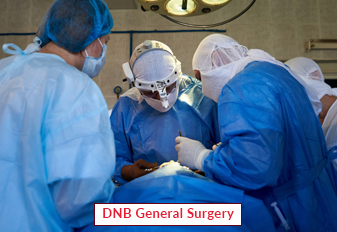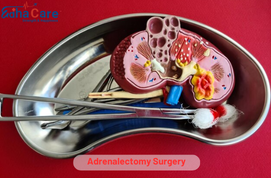Lymph Node Biopsy

Lymph nodes are vital components of the lymphatic system, playing a crucial role in immune function. Small, bean-shaped structures distributed throughout the body, they filter and trap harmful substances like bacteria and viruses. Lymph nodes contain immune cells that help combat infections and regulate the body's immune response. Swelling or tenderness in these nodes often indicates an immune response to an infection.
Book an Appointment
About Lymph Node Biopsy
A lymph node biopsy is a diagnostic procedure to examine lymph node tissue for abnormalities or diseases. Typically performed when lymph nodes are enlarged or suspect, the biopsy involves removing a small tissue sample for analysis. This can help identify infections, autoimmune disorders, or cancer.
The procedure may be conducted through a fine needle aspiration, core needle biopsy, or surgical excision, depending on the case. Results from a lymph node biopsy aid in accurate diagnosis and guide appropriate treatment plans, providing crucial information about the nature and extent of potential diseases affecting the lymphatic system.
Procedure of Lymph Node Biopsy
Lymph node biopsy surgery is a diagnostic procedure that involves the removal of a sample of tissue from a lymph node for examination. Here's an overview of the procedure in five key points:
-
Patient Preparation: Before the surgery, the patient undergoes a thorough evaluation, including imaging studies and possibly a fine needle aspiration to identify the target lymph node. Preoperative instructions are provided, which may include fasting before the procedure and discontinuation of certain medications.
-
Anesthesia: Lymph node biopsy surgery is typically performed under local anesthesia, with the patient awake but the target area numbed. In some cases, general anesthesia may be used, especially if multiple lymph nodes need to be biopsied or if the procedure is more extensive.
-
Biopsy Techniques: There are different techniques for obtaining a lymph node biopsy. Fine needle aspiration involves using a thin needle to withdraw a small tissue sample. Core needle biopsy uses a larger, hollow needle to obtain a more substantial tissue sample. In some cases, surgical excision of the entire lymph node may be necessary for a comprehensive analysis.
-
Guidance Imaging: During the procedure, imaging techniques such as ultrasound or CT scans may be utilized to guide the surgeon to the precise location of the targeted lymph node. This ensures accuracy and minimizes the risk of damaging surrounding structures.
-
Postoperative Care: Following the biopsy, patients receive postoperative care, which includes monitoring for any signs of complications, such as bleeding or infection. Pain management and instructions for wound care are provided. The extracted tissue is sent to a pathology laboratory for examination, and results play a crucial role in diagnosing conditions like infections, autoimmune disorders, or cancer.
Require Assistance?
Get A Quick Callback From Our Healthcare Experts






